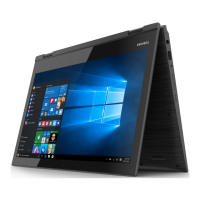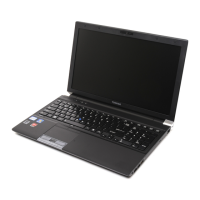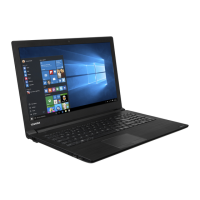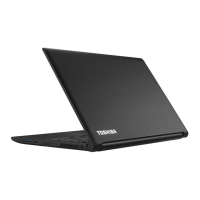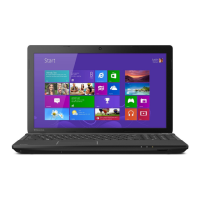
Do you have a question about the Toshiba Satellite Radius X20W-E and is the answer not in the manual?
| Storage | 256GB SSD |
|---|---|
| Resolution | 1920 x 1080 |
| Graphics | Intel HD Graphics 620 |
| Display | 12.5-inch |
| Operating System | Windows 10 |
| Weight | 1.32 kg |
| Dimensions | 15.4 mm |
| Ports | HDMI |
| Wireless | 802.11ac Wi-Fi |
Provides information on regulatory compliance and standards applicable to TOSHIBA computers.
Outlines FCC notices, conditions, and contact information for compliance.
Declares compliance with EU directives and standards for the product.
Lists necessary hardware and documentation items for initial setup.
Guides on initial computer setup, including opening the display and powering on.
Instructions on connecting the AC adapter for power and battery charging.
Step-by-step guide to powering on the computer for the first time.
Introduces basic Windows features like Start Menu, Taskbar, and Search.
Explains how to use Sleep and Hibernation Modes for power management.
Discusses system recovery options and creating recovery media.
Identifies and describes major computer components and ports.
Details the keyboard, fingerprint sensor, touch pad, and stylus pen.
Explains battery features, charging, and power indicators.
Guides on tablet mode, flat mode, and changing screen orientation.
Explains gestures and operations for touch screen and touch pad.
Instructions for using the stylus pen and replacing its tip.
Details various USB Type-C adapters and port functionalities.
Configures computer settings via TOSHIBA Settings tool.
Explains USB charging capabilities like Sleep and Charge.
Instructions for setting and managing user and supervisor passwords.
Guide to accessing and changing BIOS settings.
Steps for identifying and resolving computer problems effectively.
Troubleshooting for keyboard, program responsiveness, and startup failures.
Addresses issues related to AC power, battery, and overheating.
Troubleshooting for touch pad, mouse, and fingerprint sensor issues.
Resolves problems with sound systems, external monitors, LAN, and Bluetooth.
Information on obtaining additional technical assistance from TOSHIBA.
Summarizes physical, environmental, and power requirements.
Details wireless technology interoperability, health, and regulatory information.
Provides compliance information for FCC, Taiwan, Australia, and Japan.
Information on Intel Active Management Technology and Authenticate.
Contains legal disclaimers, technical footnotes, and term definitions.


